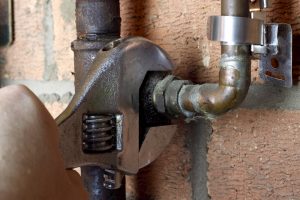
The thought of a gas leak is certainly one of the most stress-inducing home inspection items for any homeowner. You see, a gas leak is silent. It is quite dangerous – both physically and mentally. A undetected gas leak often leads to severe health concerns, including dizziness, depression, and even death. If not handled properly, the risk of an explosion is also ever-present. As a homeowner, you need to know the signs of a gas leak, and how to look for one safely.
Common Signs of a Gas Leak
First, let’s explore the most common signs of a residential gas leak. The moment you notice these signs, you’ll want to contact emergency services, your utility company, and bluefrog Plumbing + Drain of Amarillo. We can handle the situation.
- Noise – Most commonly, you’ll notice a strange hissing sound near the gas line itself. If you hear this, you may have a gas leak. In fact, a noticeable sound is likely the result of a significant leak.
- Rotten Eggs – While natural gas itself has no odor, gas distributors put in the smell of sulfur or rotten eggs, so people can notice a leak. If you smell mercaptan (an additive that leads to that telltale rotten egg smell), then give someone a call!
- Bubbles – The quickest way to determine a gas leak is to perform what’s known as the bubble test. Using a bit of dish soap and water, and with the gas turned on, use a sponge or cloth to dab the solution onto the suspected area. If you notice bubbles, you’ve got a leak.
- Dying Plants – An exterior leak often leads to dying grass and plants in your yard. A noticeable patch of dead grass is a sure sign of an underground gas leak in the main line.
Where to Look for Gas Leaks
The most common location for a gas leak is at the gas valve itself. An old-style gas valve – which is not allowed on new installations – is known as a lube valve or plug valve. On an older gas line system, you may still have such a valve. If so, you’re at an increased risk for gas leaks.
The easiest method to handle a gas leak in such a valve is to replace the entire valve. However, you should replace that old-style valve anyway.
The second most common location for a gas leak is at the union. A union is a type of fitting that works as a disconnect point for multiple gas appliances and lines. If the union is not tightened properly, it will leak over time. Using the bubble method, you can test for leaks in this section of the gas pipe.
The moment you notice the telltale signs of a gas leak, or discover the leak yourself, contact bluefrog Plumbing + Drain of Amarillo. Our plumbing technicians are highly-trained, carry the right equipment, and are committed to handling gas leaks in your home. Schedule prompt service at 806-243-1849.





